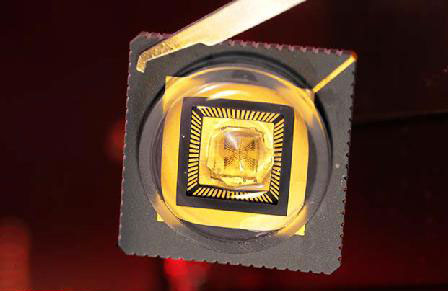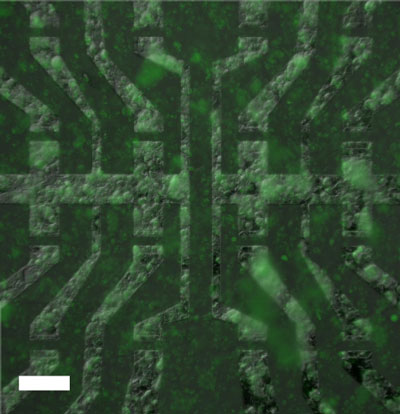| Mar 02, 2012 |
Neural implants made of carbon - Launch of the European NeuroCare project
|
|
(Nanowerk News) In the future, neural implants could replace destroyed sensory cells in the eye or ear – a dream come true for humanity. One of the greatest challenges yet to be addressed is designing the interface between medical technology and human tissue. In order to overcome the limitations of existing models, scientists from Forschungszentrum Juelich and eleven other institutions involved in the NeuroCare project, which kicked off on 1 March 2012, will develop novel biointerfaces made of carbon.
|
|
The blind see, the lame walk, and the deaf hear: in the future, neural implants could replace destroyed sensory cells in the eye or ear – a dream come true for humanity. One of the greatest challenges yet to be addressed is designing the interface between medical technology and human tissue. In order to overcome the limitations of existing models, scientists from Forschungszentrum Jülich and eleven other institutions involved in the NeuroCare project, which kicked off on 1 March 2012, will develop novel biointerfaces made of carbon.
|
 |
| As part of NeuroCare, researchers experiment with devices such as biocompatible chips made of graphene in order to develop carbon biointerfaces for improved neural implants.
|
|
For several years, biomedical researchers have been working on implants to compensate for damage to the nervous system caused by an accident or illness. They focus on tools that correct problems with basic cognitive abilities, such as a loss or impairment of eyesight or the ability to hear. In addition, they may also be used to treat traumatic injuries to the spine, drug-resistant epilepsies, psychiatric disorders, and chronic neurodegenerative diseases.
|
|
However, the technology is still in its infancy. What makes it so difficult to implement is primarily connecting living tissue and electric circuits, with flexible cell structures containing water on one side and rigid solid electrodes on the other side. NeuroCare therefore uses materials based on carbon as they are better suited to medical purposes than the metals or silicon conventionally used.
|
|
"We concentrate on developing new carbon-based biointerfaces, which are accepted more readily by living tissue and also cause fewer problems due to biological fouling, that is bacterial contamination," says Prof. Andreas Offenhäusser, head of Bioelectronics at the Institute of Complex Systems (ICS-8) and the Peter Grünberg Institute (PGI-8) of Forschungszentrum Jülich. Carbon-based materials are inexpensive, biologically inert, robust, and come with a broad range of electric properties, from metal-like conductors to semiconductors to insulators.
|
|
In order to optimize the contact to biological tissue, the researchers are planning to experiment with flexible materials and test different surface structures on the nanometre scale. Within the next three years, the project coordinated by the French Commissariat à l'Energie Atomique et aux Energies Alternatives (CEA) will produce prototypes of retinal, cortical and cochlear implants, which will then be refined until they can be brought to the market in the following ten years.
|
|
The researchers from Jülich already successfully used carbon-based implant materials at the end of 2011, before the launch of NeuroCare. Together with scientists from Munich, they grew cardiac cells on a biocompatible chip made of graphene. This material has only been intensively investigated since 2004 and consists of large, mat-like molecules of pure carbon. "We found that the cardiac cells do very well on the graphene chip and that they develop a healthy pulsation," says Jülich biologist Dr. Vanessa Maybeck. In comparison to components made of silicon, the noise floor is much lower in graphene chips.
|
 |
| At the end of 2011, researchers from Forschungszentrum Jülich and Technische Universität München grew cardiac cells on a graphene transistor.
|
|
Project partners in NeuroCare
|
|
Commissariat à l'Energie Atomique et aux Energies Alternatives (Projekt-Koordination: Dr. Philippe Bergonzo) Ecole Supérieure d'Ingénieurs en Electronique Forschungszentrum Jülich Ayanda Biosystems SA University College London (London Centre for Nanotechnology) Johannes Gutenberg-University Mainz Neuromedics Nano Retina Ltd. Université Pierre et Marie Curie Aleria Biodevices SL Technische Universität München (Walter Schottky Institute) Kurt Salmon
|


